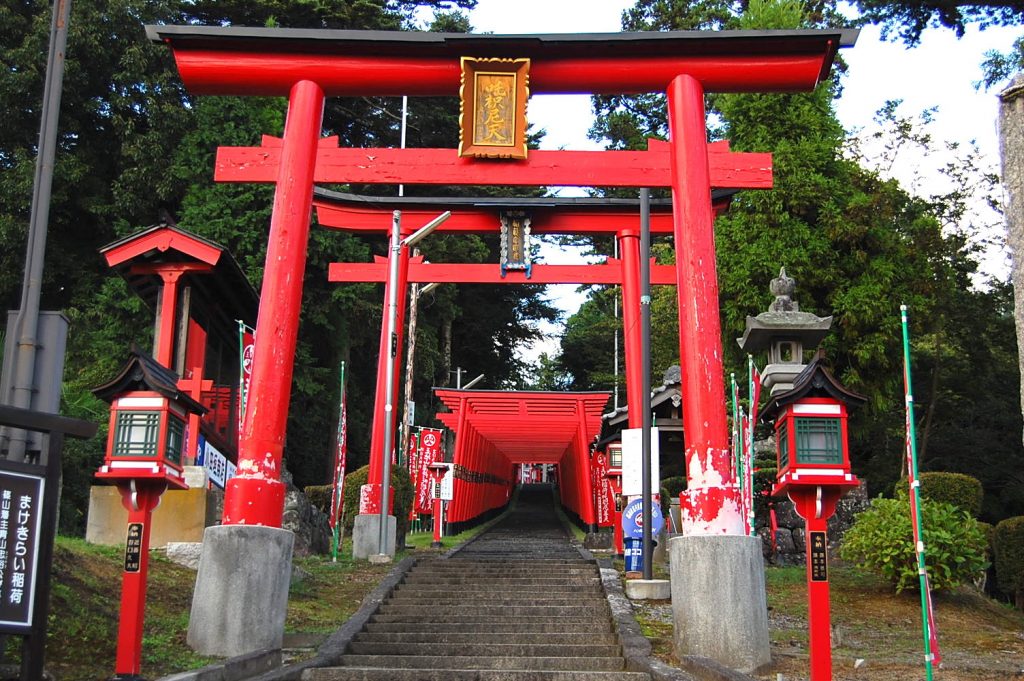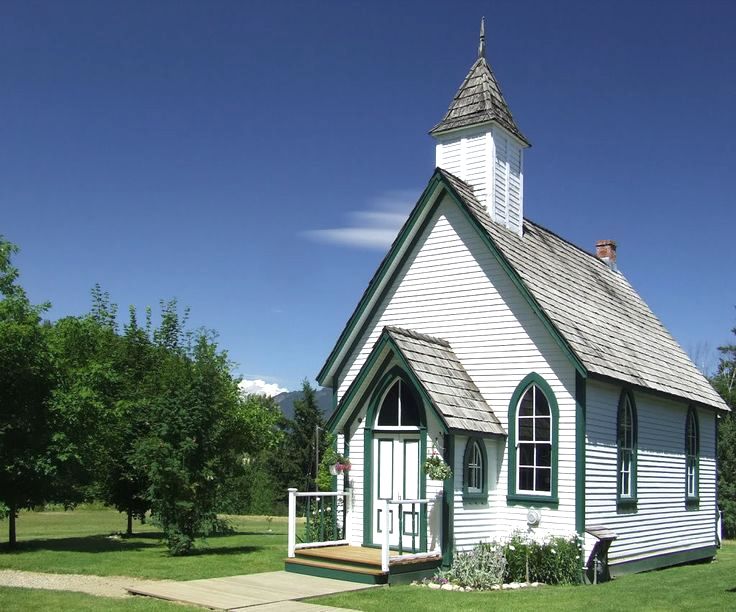Living in a completely foreign culture is sometimes the best way to get insights into your own culture, to be able to see things that are so obvious they’re hiding in plain sight, thus require your looking at them from “the outside” to make them apparent.
On a lighter note, let me append to that how utterly amazed I am by my talent for coming up with genuinely stupid questions about Japan, its customs, its culture, its people.
The particular one I’m about to reveal isn’t really that bad . . . maybe only 4 or 5 on the cluelessness scale. Here it is . . .
A few years back I asked my wife Masumi — who displays monumental patience with me, probably because she knows I’m truly curious about Japan, not inclined to make nugatory small talk — about the architectural manifestations of “spiritual life” here. The question: “Why are there so many shrines and temples here in Japan, darling?” (Okay . . . I didn’t say ‘darling’ or ‘sweetheart’ or ‘lamb chop’ or ‘tofu burger’ to her. It’s just not my style.)
I don’t recall her exact words. But it went something like: “Have you ever looked around in America? There are churches everywhere you go.”
My God! She’s right!
From small and modest . . .
To majestic and sometimes garish . . .
There are churches everywhere!
To make things truly convoluted, while all these churches essentially promote Christian beliefs, there are so many denominations of Christianity, it’s impossible to keep track of them all. Lutheran, Baptist, Catholic, Episcopalian, Church of Christ, 7th Day Adventist, Mormon, Presbyterian, Methodist, Christian Science, on and on.
Then to make things even more disorienting to anyone hailing from the East, in addition to the Christian churches, there are Jewish temples — also with an assortment of subtle shadings, e.g. Orthodox, Reform, Conservative, Reconstructionist, Humanistic, Hasidic, Haredi, Chabad — and then in recent times mosques which serve as the spiritual centers for the flocks who adhere to Islam.
What a menagerie!
It makes Japan look like it’s just at the early stages of ramping up its institutionalization of theology, though in point of fact, the two dominant religions here — Buddhism and Shinto — actually go back respectively about fifteen and thirty centuries. Maybe Japan can’t hold a candle — or stick of incense — in sheer numbers to America, or a country like Thailand, which has over 40,000 Buddhist temples alone, but I can speak from experience: There are still plenty of holy sites, temples and shrines here. Even some Christian churches.
Anyone who’s traveled the globe will tell you that this is the case just about everywhere there are people living in some organized fashion.
The obvious conclusion is that humans like to build places of worship, and to varying degrees visit these places of worship to do whatever it is they do in places of worship.
Yes, there’s worship. But while some people are kowtowing to some statue, idol, entity, ghost, relic, concept, abstraction, surrogate or whatever, others are doing something else. Wishing. Meditating. Fantasizing. Maybe scoping out what others are doing or wearing. What car they drove, what camel they rode in on, who they’re with. These days peaking at their smart phones. Checking their email. Their text messages. Tweeting or looking at their Facebook news feed. Discreetly taking selfies.
Though it’s been quite a while since I attended Catholic services, when I was a boy I had to go to Mass six days a week, thus had more than ample time to observe the devout in their Sunday best or Saturday khakis. And frankly, even back then I don’t remember much real worshipping going on. Yes, a small faction followed along in their prayer books, mouthing the incantations of the priest. But the vast majority were marking time, minds elsewhere, checking their watches. God didn’t seem to mind, or notice. No bolts of lightning ripped thought the ceiling and struck down the inattentive. God is infinitely patient, I’m told by my Bible-toting friends. (Tell that to the victims of Sodom and Gomorrah!)
I occasionally attend services here. Usually at our local shrine which I can walk to in about five minutes. A celebration typically associated with a holiday. It’s mostly a social thing.
People do pray. We each make appeals to invisible higher powers, for the things most of us on the planet desire: Happiness, health, wealth, good fortune, love, maybe marriage, harmonious relationships. There’s that universality again: concerns and values we all seem to share as human beings, regardless of where we have settled down to make a life. Concerns and values expressed in places which we designate for whatever you want to call that “quiet time” we all seem to embrace for addressing something inside us that is outside of us … greater than us … or maybe representing the us we wish we could be. Whether we worship this other or just like to sidle up to it now and then, it’s convenient to have some special designated place — a temple, a mount, a church, mosque, cathedral — to set the mood and provide the proper environment.
Here are just a few shrines and temples within easy bike-riding distance of my house.
Yes, houses of worship are everywhere here in Japan too, but at a much more modest level of ‘everywhere’ than in the U.S., and most certainly not in the over-abundance I now can see is a defining characteristic of my homeland.
It makes me wonder . . .
What exactly are they trying to prove over there? Are they maybe trying a little too hard? To be blunt, it appears all that praying and worshipping isn’t really working very well.
Americans like to say: “God is on our side.”
Really? If God truly is, then He must have a very strange sense of humor.
Or a serious mean streak.






















Life In Japan: Shoes!
Japanese DO NOT wear their shoes inside their homes.
I can’t begin to tell you how difficult this was for me to understand and adjust to when I initially arrived.
Frankly, at first I thought the whole country was OCD, in the throes of some obsessive clean disorder, or perhaps all cult foot fetishists.
This led to some moments of intense embarrassment. I would tromp into someone’s house in my loafers and as politely as they could manage, be greeted with a look of total horror! No one wanted to offend me but I might as well be dumping a bucket of monkey entrails onto their floor. Their reaction was entirely reflexive. My reaction was oafish: “Uh, sorry about that.” I definitely didn’t get what a hygienic faux pas I had just committed . . . at least for a while.
Growing up in different cultures, we are each conditioned in different ways. I had never thought about it. Shoes were shoes. They go on the feet and they go where the feet go.
Then I did start to think about it.
Most homes in the U.S. are carpeted, at least the living and sleeping areas are. Recognizing that dust, dirt, hair, skin, pet fur, drool, eyelashes, belly button lint — whatever — tends to drop and accumulate, we regularly vacuum. Then once a year, every other year, or when it finally dawns on us “it’s time”, we either rent a carpet shampooing machine or we hire a professional carpet expert to give our floors a thorough wash.
But . . .
Have you ever looked at the wash/rinse water in the tank of a carpet shampooing machine after the job is done? It’s unbelievable! Disgusting! Horrible! Scary!
You see, regular vacuuming just gets the surface. And all sorts of truly ugly abominations, particles, chips, flakes, and strands sink into the nap and settle at the bottom in the woven base. Now, think about it. We Americans lay on the carpet, rest our hands on the carpet, let the baby crawl on the carpet, maybe even make love on the carpet, fractions of an inch from all sorts of unimaginable filth.
How does all this debris accumulate? Some comes from us and our pets, or from our own bodies. But a lot is brought in on the soles of our shoes. All day we walk around on dirty surfaces, streets, sidewalks, where dogs have pooped, cars have driven, people have spit, worms have crawled, birds have deposited droppings — I could go on but you get the picture — then track all this into our beautiful American homes. Not very smart if you think about it, eh?
Maybe the Japanese are onto something!
Back to my awakening. When I refer to my initial cluelessness about wearing shoes inside, I’m talking about only my first few months here. Rather quickly, I changed my habits, in the process turning my thinking around a full 180º about shoes and cleanliness. Now I’m fully rehabilitated from my Western ways, wondering why I never questioned them before.
No, Japanese are not pathologically obsessed with cleanliness — well . . . maybe a little — but merely prudent and protective of the sanctity and hygiene of their homes.
By the way: Notice the slippers in the photo at the beginning of this article. Every Japanese household provides slippers for their guests to wear after they’ve removed their shoes. For me personally the only problem is, most standard slippers are much too small and quite uncomfortable for me to try to squeeze into. But I do appreciate the gesture. Nice touch!
I’m sitting here in my living room writing this. I’m in my stocking feet. Those are my black sneakers in the photo of our foyer. I wouldn’t have it any other way.